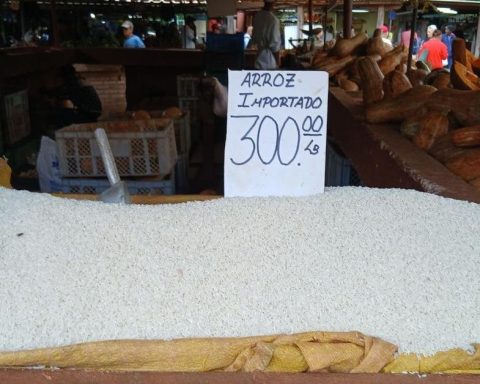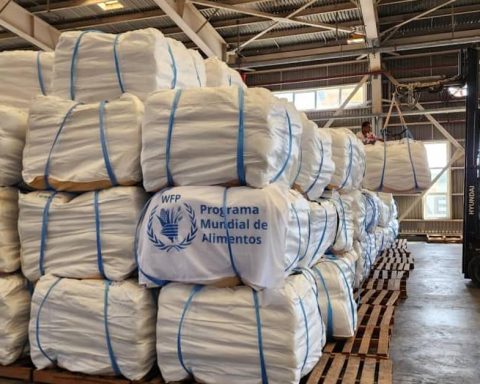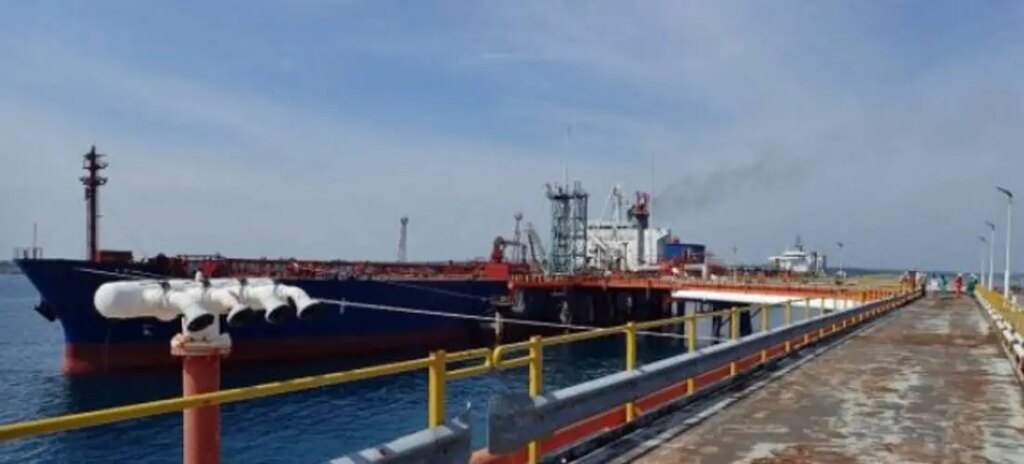A diesel tanker began unloading this Thursday in the Cuban port of Matanzas, according to local press reports. The fuel will be used for “vital services of the nation” and will not be sold at gas stations, warns Cuba Petróleo (Cupet).
Although the nationality of the ship or the origin of the product it transports was not officially reported, the Vesselfinder digital site that reports on the route followed by ships worldwide indicates that it is the Cheetah II, which left the Russian port of Tuapse, in the Black Sea, on March 25 and made a stopover in Istanbul.
Since dawn on April 27, “maneuvers are being carried out to place cargo volumes in another vessel that will take the product, in addition to Matanzas to Havana, Santiago de Cuba and Nuevitas (Camagüey),” the note details. The diesel will be used in the generation of electricity and in “sectors of the economy and the social area,” adds Cupet.
“The transfer that we carried out this morning is faster than usual, because the ship does not unload to land but instead transfers the product to another ship docked at the Juan A. Morales Bayona dock”
“The transfer that we carried out this morning is faster than usual, because the ship does not unload to land but rather transfers the product to another ship docked at the Juan A. Morales Bayona dock,” Ower Luis Grau Núñez, chief of staff, told the official press. of the dock area of the Matanzas Fuel Marketing Territorial Division.
Faced with the growing discomfort due to the lack of fuel at the island’s gas stations, the directors of the state company rushed to lower any expectations of improvement in the sale of hydrocarbons to private customers: “Although it is not a significant improvement, it is guarantees stability in vital services in each of the country’s provinces,” said Lázaro Quintero Hernández, head of the entity’s commercial area.
Also this Thursday, the Minister of Energy and Mines, Vicente de la O Levy, repeated on his Twitter account that “we are not going to touch zero with fuels,” a phrase that he had previously said before the cameras of Cuban Television. The head of the branch added on the social network that “vital services and an adjusted percentage (sic) for sale to the population will continue to be guaranteed.”
The minister announced the start of the sale of liquefied gas in the eastern provinces, which began on Wednesday and will gradually extend to the other provinces. The distribution has been possible by a ship with liquefied gas, intended for cooking food in the residential sector, which arrived on Tuesday night at the port of Santiago de Cuba.
Lidia Rodríguez Suárez, Commercial Director of the Fuel Marketing Company of the Cuba Petróleo Union, commented to the newspaper Granma that as soon as the liquefied gas reaches the territories, both the filling plants and the points of sale will be activated during extended hours.
As soon as the liquefied gas reaches the territories, both the filling plants and the points of sale will be activated during extended hours.
As revealed by Reuters on Wednesday, Mexico is sending more and more oil to Cuba. According to data from Eikon and TankerTrackers.com managed by the British agency, the tanker Bicentenario, from the state-owned Petróleos Mexicanos (Pemex), has unloaded twice this April at a Havana refinery that produces finished gasoline.
In addition, the ship lucky, with Panamanian flag, he came to the island twice so far this year, coming from the Mexican port of Salina Cruz, with cargoes of liquefied petroleum gas (LPG).
Last week the Minister of Energy argued the shortage of fuel since there are worldwide difficulties in the sector and that there is a lack of inputs to produce it, and in the case of Cuba, the problems are aggravated by the embargo. “It is very difficult for us to obtain ships to transport the fuel, to seek financing, to comply with some requirements that are normal in fuel contracts,” he explained. In these circumstances, transportation failures deepen the problem, he then added.
The images of avenues and streets practically empty of vehicles are repeated throughout the Island and the hydrocarbon crisis led the authorities to cut expectations of festivities during the day of May 1. Instead of the traditional parade for Workers’ Day in the Plaza de la Revolución in Havana, there will be a lower concentration in the area of the Havana coast.
This Monday, the general secretary of the Central de Trabajadores de Cuba (CTC), Ulises Guilarte de Nacimiento, announced that he would also small acts will multiply in other municipalities, due to “the complex economic situation that our country is going through and in particular the limitations with the insurance of fuel.”
________________________
Collaborate with our work:
The team of 14ymedio He is committed to doing serious journalism that reflects the reality of deep Cuba. Thank you for accompanying us on this long road. We invite you to continue supporting us, but this time becoming a member of our newspaper. Together we can continue transforming journalism in Cuba.

















